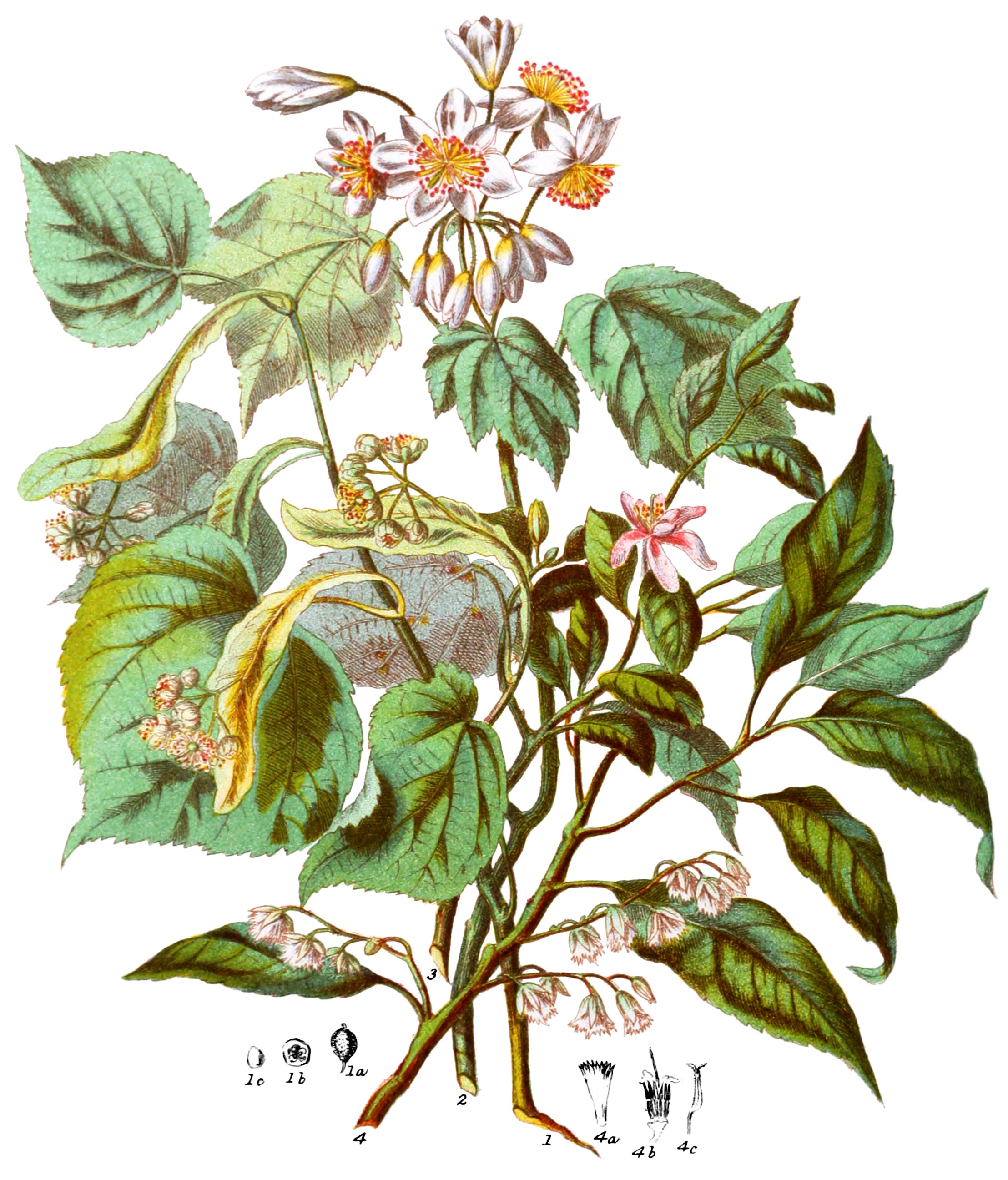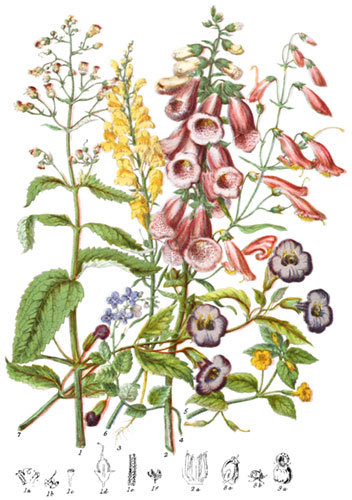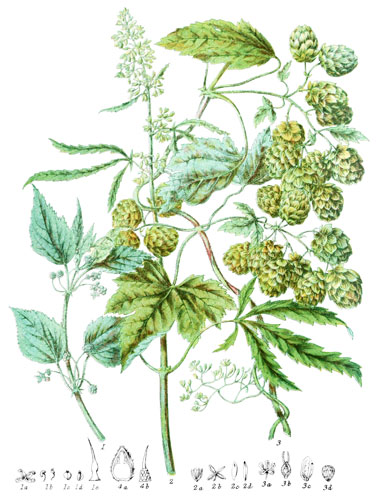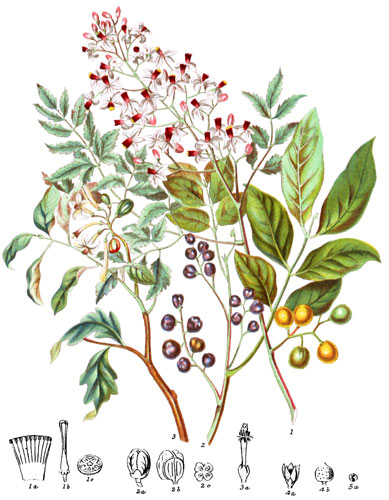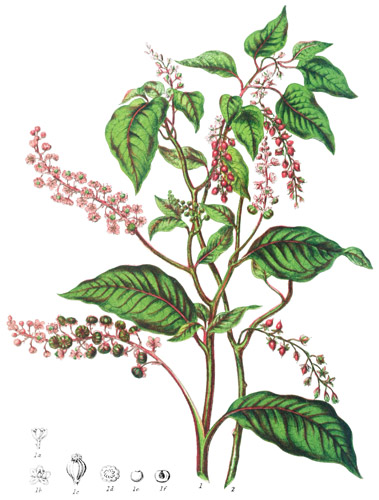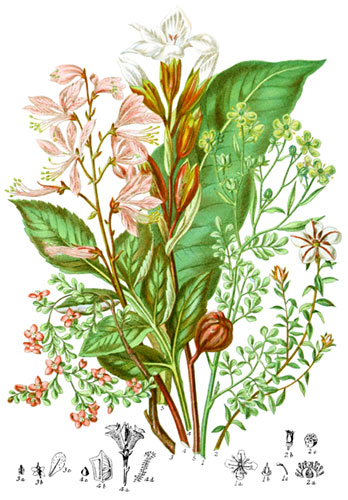Key characteristics
Trees, shrubs, and a few herbaceous plants. The leaves are alternate, simple, toothed at the edge, with stipules at the base. The flowers are generally perfect; the sepals of the calyx are four or five, distinct or united; the petals are also either four or five, entire or fringed at their edges, usually with a small pit at their base, occasionally entirely wanting. The stamens are generally numerous, growing at the base of the pistil, sometimes surrounded by the enlarged border of the lower part of the pistil. The anthers are two-celled, opening lengthwise, or by pores; the outer stamens are sometimes of a petal-like form. The ovary is composed of from two to ten carpels, which are in some cases disunited; the single style is terminated by as many stigmas as there are carpels. The fruit is dry or pulpy, often prickly, sometimes winged; it contains several cells, or one only becoming perfect; the seeds are solitary or numerous. In most respects this tribe has affinity with the Mallow tribe, and the others connected with it.
The character of the whole Order is to contain a wholesome mucilaginous juice.
Select plants in this order
Not all plants listed are illustrated and not all plants illustrated are listed.
- Tilia Euruopæa (1) is now naturalized in England, if not originally a native of our island; it may be reckoned amongst the most elegant of European trees; the foliage is of a delicate texture, and of a very bright green in spring; the upper surface of the leaves is smooth, at the branching of the veins beneath is a small tuft of brown woolly hairs. The flower-stalk is attached for about half its length to a pale membranous bract; the flowers are of a yellowish green colour, highly odoriferous, especially in the evening; they are considered a remedy for coughs, and yield a large supply of honey to bees; the honey obtained from the Linden-trees in the forest of Kowno, Lithuania, is esteemed more than any other. The wood of the Lime is light and fine-grained, and serves for many useful purposes; it was selected by Gibbons for his celebrated carvings, specimens of which are highly valued in the choir of St. Paul’s, London, in the library of Trinity College, Cambridge, and in various edifices. The bark of the different species affords strong tough fibres for matting and cordage, the young twigs are made into baskets, and the sap produces sugar. In the last half of the seventeenth century, Evelyn encouraged the planting of Lime-trees in London, and in country parks to a great extent; and about the same period they were generally adopted in France, for public gardens and avenues, instead of the Horse-chesnut, which until then had been the favourite tree. On the ramparts of many ancient German cities the Linden-trees flourish most luxuriantly, forming a delightful shade, and perfuming the air with their fragrance to a great distance, as at Augsburg and Worms. In the modern city of Berlin, the famous street, Unter den Linden, is shaded by four rows of trees, chiefly Lime. It is said that the ancestors of Linnæus derived their name from an old Lime of vast size which grew near their abode. Linn being Swedish for the Lime-tree.
- Sparmannia Africana (2) was named in memory of Anders Sparmann, of Stockholm, a celebrated traveller in China, in the South Sea Isles, and at the Cape of Good Hope, where he discovered this beautiful shrub. The calyx is white, and appears to form part of the flower with the petals; the long yellow nectaries which surround the stamens are of a singular club-shape; the whole plant abounds with a tasteless mucilage.
- Grewia occidentalis (3), named by Linnæus after Dr. Grew, author of a work on “The Anatomy of Vegetables,” is a shrub of no particular beauty; the inner surface of the sepals is coloured like the petals, which have at their base a small nectariferous scale of the same purple color.
- G. elastica, and other East Indian species, produce a little purple berry, of pleasant acid flavour, used in making sherbet.
- G. oppositifolia grows on the lower range of the Himalaya, and yields a fibrous inner bark of the same nature as that of Tilia.
- Corchorus olitorius contains so large a portion of mucilage as to be eaten as a vegetable in India and in Egypt; its fibres, as well as those of C. capsularis, are made into a coarse cloth in Bengal, used for garments by the poor, for rice-bags and for cordage; a kind of paper is also made from it.
- The wood of Aristotelia maqui is used for the musical instruments in the East, the strings are formed from the tough bark; the berries are made into wine.
- Berrya amomilla, of Trincomalee, is employed in the construction of the famous Madras boats.
- Elæocarpus cyaneus (4) belongs to the division of this Order that has fringed petals, and anthers opening by a pore at the top. The fruit is of thee size and shape of the olive; it is eaten by the natives of India in curries; the hard furrowed seeds are frequently worn as beads, and are sometimes set in gold as ornaments for Europeans.
Locations
The principal portion of this Tribe is to be found within the Tropics, either as fine trees, shrubs, or small plants; those which are peculiar to the northern countries of both hemispheres are timber trees. Several species are widely scattered throughout India and China. Tilia is the only genus belonging to Britain.
Legend
- Tilia Euopæa, European Lime. England.
- Capsule.
- Cross-section of capsule.
- Seed.
- Sparmannia Africana, African Sparmannia. Cape of Good Hope.
- Grewia occidentalis, Elm-leaved Grewia. Cape of Good Hope.
- Elæocarpus cyaneus, Blue-fruited Elæocarpus. New Holland.
- Petal.
- Stamen and Pistil.
- Anther.
Explore more
Posters
Decorate your walls with colorful detailed posters based on Elizabeth Twining’s beautiful two-volume set from 1868.
Puzzles
Challenge yourself or someone else to assemble a puzzle of all 160 botanical illustrations.
